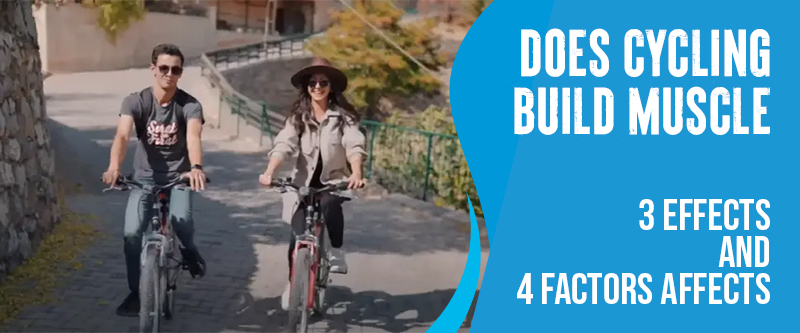Muscle size grows as muscles are consistently pushed to handle increased resistance or weight, called muscle hypertrophy. This growth is triggered when muscle fibers experience damage or strain.
Yes, cycling can build muscle by engaging various muscle groups, such as the glutes, calves, quads, hamstrings, and core. Proper cycling techniques and muscle activation can optimize your workout and strengthen these muscle groups.
Incorporating strength training exercises alongside cycling can enhance muscle development and performance.
In this blog, we’ll explore the muscles you engage in during your cycle sprints, how cycling can promote muscle growth, what factors impact your muscle-building journey, and muscle-maximizing strategies with prevention tips.
Does Cycling Build Muscle: The Myths
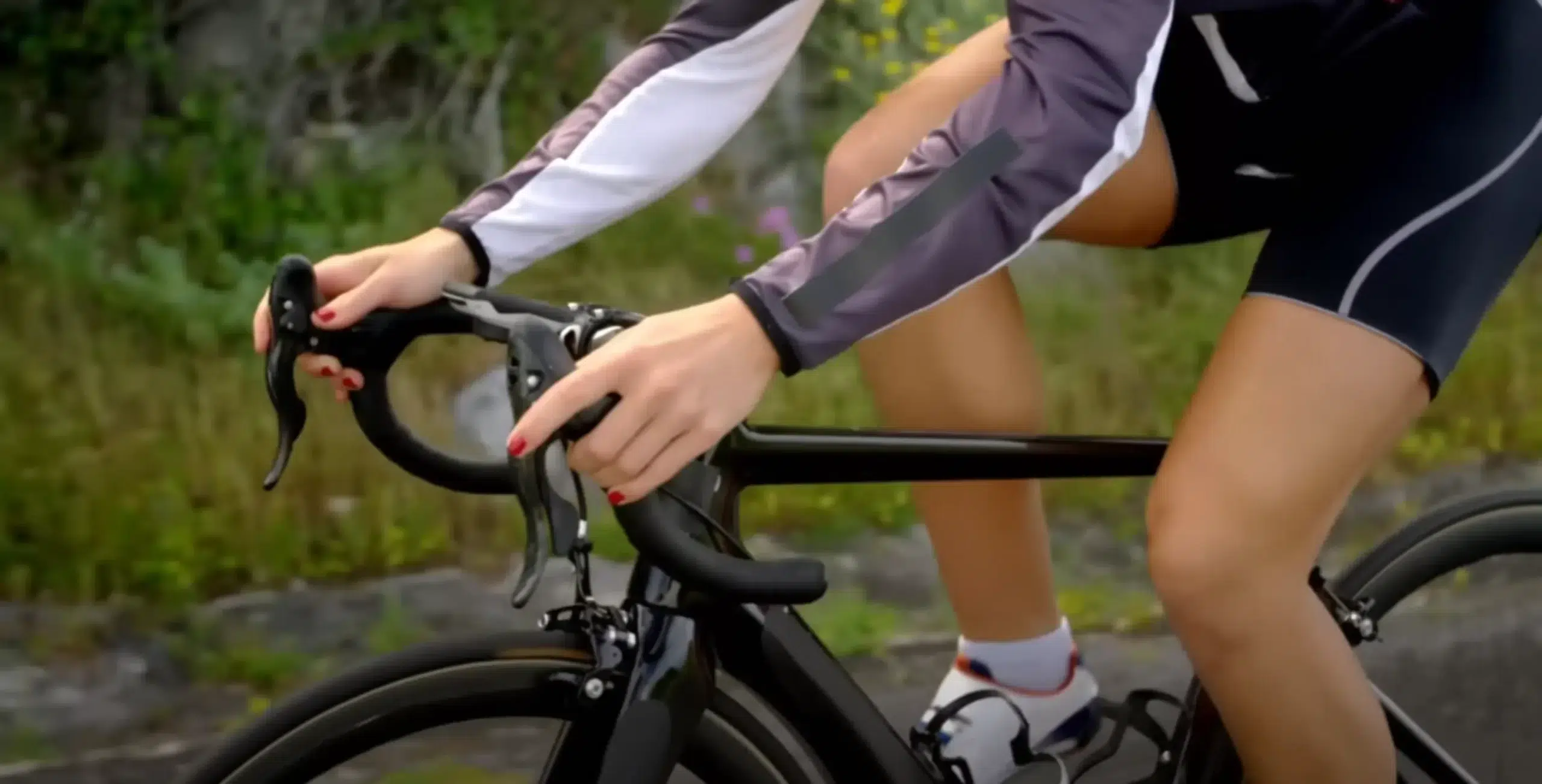
Many myths and misconceptions exist about cycling and its impact on muscle building. Understanding the truth behind these ideas is essential to maximize your workouts effectively. Let’s address some of the common misunderstandings.
Myth Busting: Cycling Builds Muscle
Some people believe that cycling doesn’t build muscle, but this is not true:
- Fact: Cycling builds muscle mass, particularly in the legs. The continuous pedaling motion works for various muscle groups.
- Strength and Endurance: While cycling might not bulk you up like weightlifting, it strengthens and tones your muscles, improving endurance and muscle definition.
Clarifying the Difference: Toning vs. Bulking Up
Understanding the difference between toning and bulking up is key:
- Toning: Cycling helps tone muscles more defined and firm without significantly increasing their size. This is great for people who want a lean and fit look.
- Bulking Up: Bulking up typically requires heavy weightlifting and a specific diet. While cycling strengthens muscles, it usually doesn’t lead to the significant muscle mass increase seen in bodybuilders.
By debunking these myths, you can better appreciate how cycling can contribute to your fitness goals. Whether you’re looking to tone up or gain more strength, cycling offers valuable benefits for muscle development.
Cycling On Muscle Growth: 3 Effects
Cycling builds and tones various muscles in the body. While it’s commonly known for strengthening the legs, cycling also engages core and upper body muscles. Let’s explore how cycling targets these key muscle groups.
Leg Muscles: Quads, Hamstrings, and Calves
The muscles in your legs are the ones that are primarily worked when cycling. Here are the primary leg muscles involved:
- Quads: In the front of the thighs, the quadriceps are heavily engaged when you pedal, especially when you push down on the pedals.
- Hamstrings: These muscles at the back of your thighs are activated when you pull up on the pedals.
- Calves: The calf muscles help with the pedaling motion and provide stability as you ride.
Core Muscles: Abdominals and Lower Back
Cycling also strengthens your core muscles. Balance and stability are enhanced when you have a strong core:
- Abdominals: Your abdominal muscles keep you stable and upright on the bike and help with balance, especially on uneven terrain.
- Lower Back: The muscles in your lower back support your posture and help you stay comfortable during long rides.
Upper Body: Shoulders and Arms
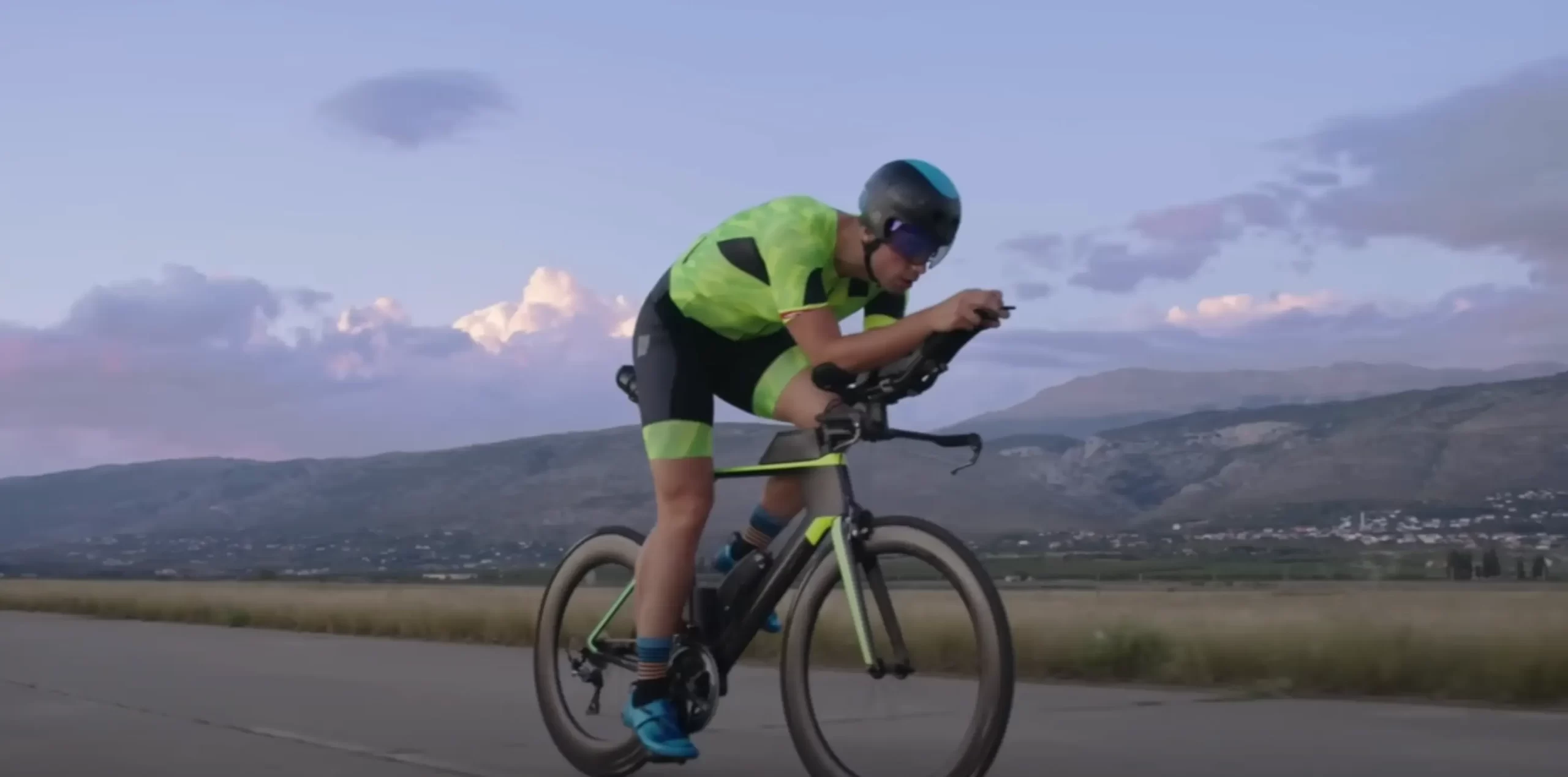
Although not as heavily engaged as the legs, your upper body still plays a crucial role in cycling:
- Shoulders: Your shoulder muscles help steer and control the bike, especially during turns and climbs.
- Arms: The muscles in your arms, particularly your biceps and triceps, grip the handlebars and support your upper body weight.
By understanding how cycling targets these muscle groups, you can better appreciate the full-body workout that cycling provides. Cycling is a versatile and practical exercise for toning your legs, strengthening your core, or improving upper-body endurance.
Cycling Muscle Building: 4 Factors Affecting It
Cycling can help build muscle, but the amount of muscle you build depends on several factors, such as your ride’s intensity, duration, terrain, resistance settings, and frequency, which can affect muscle growth.
Intensity of Cycling: Leisure vs. High-Intensity
The intensity of your cycling plays a big role in muscle building:
- Leisure Cycling: Riding flexibly is good for light exercise and endurance but doesn’t build much muscle.
- High-Intensity Cycling: Pushing yourself with harder, faster rides helps build more muscle, especially in your legs.
Duration of Cycling Sessions: Short Rides vs. Long Endurance Rides
How long you ride also impacts muscle development:
- Short Rides: These can be intense and help build muscle quickly, but you may need to build endurance more effectively.
- Long Endurance Rides: Riding for longer periods builds muscle gradually and improves overall stamina.
Cycling Terrain: Flat Roads vs. Hilly Terrain
The type of terrain you cycle on can change how your muscles work:
- Flat Roads: Cycling on flat surfaces focuses more on endurance with steady, even muscle use.
- Hilly Terrain: Riding uphill challenges your muscles more, helping to build strength and power in your legs.
Frequency of Cycling: Consistency
How often you ride and allow your muscles to recover is crucial for muscle growth:
- Consistency: Regular cycling helps maintain and build muscle over time.
- Recovery: Resting and recovering between rides is important for muscle repair and growth.
Maximizing Muscle Building Through Cycling: 3 Simple Strategies
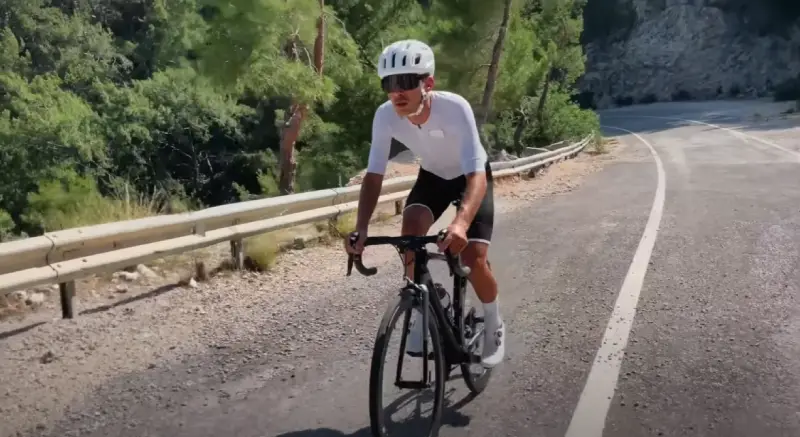
There is no doubt that cycling is a great way to build muscle, but there are ways to make it even more effective. You can maximize muscle growth by incorporating specific techniques and strategies into your cycling routine. Let’s explore how interval training, hill climbing, resistance training, and cross-training can help.
Hill Climbing: Boosting Leg Muscle Strength
Cycling uphill is an excellent way to strengthen your leg muscles:
- Increased Strength: The natural incline forces your muscles to work harder, especially your quads, hamstrings, and calves.
- Power and Endurance: Regular hill climbing improves your leg muscles’ power and endurance.
Resistance Training: Using Higher Gears for More Resistance
Adjusting your bike’s gears can help you build more muscle:
- Higher Gears: Pedaling in higher gears increases resistance, which makes your muscles work harder.
- Muscle Engagement: This extra effort helps build and tone your muscles, particularly in your legs.
Cross-Training: Combining Cycling with Strength Exercises
Combining cycling with other strength exercises can enhance muscle building:
- Strength Training: Include weightlifting or bodyweight movements such as squats and lunges to engage various muscle groups effectively.
- Balanced Workout: This combination ensures a well-rounded workout, improving muscle development and strength.
Cycling Related Muscle Growth: 3 Prevention Tips
Building muscle through cycling isn’t just about the ride. Maintain correct cycling form to prevent injuries and build muscle effectively. Incorrect posture hinders muscle use and causes aches. Let’s look at how protein intake, hydration, and rest contribute to muscle growth.
Protein Intake: Supporting Muscle Repair and Growth
Building and repairing muscles depends on protein post-ride. Cycling triggers protein synthesis in the 2 to 4 hours following your workout.
- Muscle Repair: Protein helps fix damaged muscle fibers during intense cycling.
- Muscle Growth: Eating enough protein supports the growth of new muscle tissue.
Hydration: Importance of Staying Hydrated for Muscle Performance
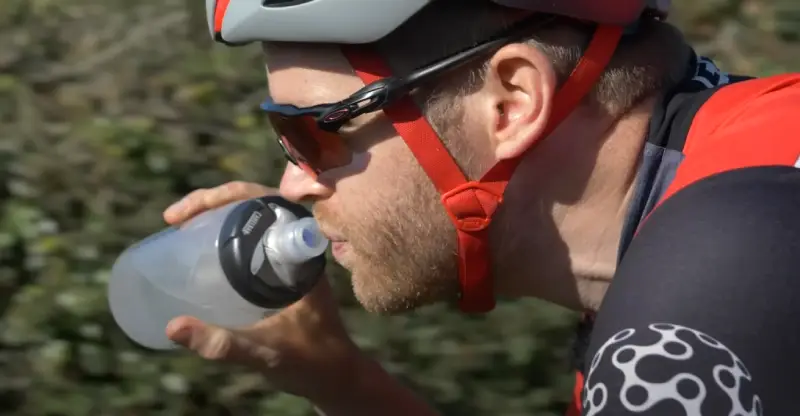
Staying hydrated is key to maintaining muscle performance and overall health:
- Improved Performance: Proper hydration keeps your muscles working efficiently and prevents cramps.
- Better Recovery: Water helps transport nutrients to your muscles, aiding in quicker recovery.
Rest and Recovery: Essential for Muscle Building
Your muscles need time to rest and recover after a workout as much as they need time to perform the workout itself:
- Muscle Repair: Rest allows your muscles to repair and grow stronger.
- Preventing Injury: Adequate recovery time helps prevent overuse injuries and ensures long-term muscle health.
Sample Weekly Cycling Regimen:
- Monday: Rest or light recovery ride (30 minutes).
- Tuesday: Interval training (20-30 minutes HIIT).
- Wednesday: Long endurance ride (60-90 minutes).
- Thursday: Strength training (45 minutes off-bike resistance exercises).
- Friday: Hill climbing session (45-60 minutes).
- Saturday: Rest or active recovery (light yoga or stretching).
- Sunday: Mixed training ride (combination of flats and hills, 60-90 minutes).
Conclusion:
Reconsider your perspective on cycling workouts. It’s not merely about moving from point A to B or maintaining your heart rate – it serves as a comprehensive strength-building tool. By adjusting the intensity, duration, terrain, and frequency of your cycling sessions, you can target your quads, hamstrings, calves, core, and upper body.
Incorporate hill climbs, high-gear resistance, and strength exercises to engage various muscle groups beyond cycling skills. Remember, muscle development hinges on exercise, proper nutrition, and adequate rest for recovery.
You’ll be well-informed next time someone claims cycling doesn’t facilitate muscle growth. Let’s dispel that misconception and hop on the bike to sculpt a stronger, fitter, and healthier version of yourself!
FAQs
Does Cycling Replace Traditional Weight Training for Muscle Building?
Cycling provides different muscle-building benefits than weight training. Prioritizing training and recovery with exercises like squats and deadlifts will lead to more muscle growth than cycling alone. Cycling can complement muscle-building efforts but not substitute targeted weight training.
Is There A Best Cycling Routine For Building Muscle?
For building muscle through cycling, focus on uphill sprint intervals lasting 30 seconds to a minute in a gear for cadence below 95. Perform some intervals in and out of the saddle to strengthen your legs and glutes effectively. This routine targets muscle growth while improving cycling performance.

